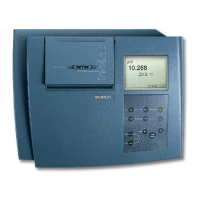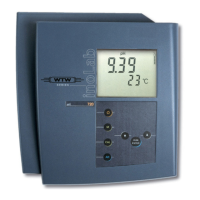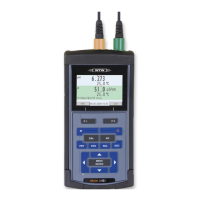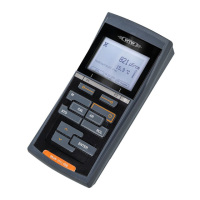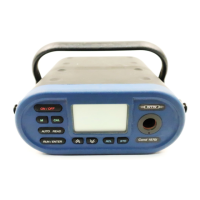inoLab
®
Multi 9620 IDS Dissolved oxygen
ba77173e04 12/2017 75
8.3 Calibration
8.3.1 Why calibrate?
D.O. sensors age. This changes the slope of the D.O. sensor. Calibration deter-
mines the current slope of the sensor and stores this value in the instrument.
8.3.2 When to calibrate?
If your evaluation of the FDO
®
Check suggests calibrating
When the calibration interval has expired
When your accuracy requirements are especially high
Routinely within the framework of the company quality assurance
After a Zero calibration.
8.3.3 Calibration procedures
The Multi 9620 IDS provides 2 calibration procedures:
Calibration in water vapor-saturated air.
Calibration via a comparison measurement (e.g. Winkler titration according
to DIN EN 25813 or ISO 5813).At the same time, the relative slope is
adapted to the comparison measurement by a correction factor. When the
correction factor is active, the [Factor] indicator appears in the measuring
window.
8.3.4 Calibration in water vapor-saturated air
For this calibration procedure, the Comparison meas. setting must be set to off
in the Calibration menu.
Proceed as follows to calibrate the D.O. sensor:
The FDO
®
925 D.O. sensor ages so little it does not have to be reg-
ularly calibrated.
To detect changes of the sensor as early as possible, the
FDO
®
Check procedure can be useful (see section 8.2
FDO
®
CHECK (CHECKING THE FDO 925), page 73).
1. Connect the D.O. sensor to the meter.
2. Place the D.O. sensor FDO
®
925 in the check and storage vessel
FDO
®
Check .
The sponge in the check and storage beaker must be moist (not
wet). Leave the sensor in the check and storage vessel long
enough so it can adapt to the ambient temperature (min. 15 min-
utes).
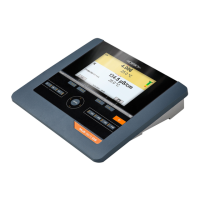
